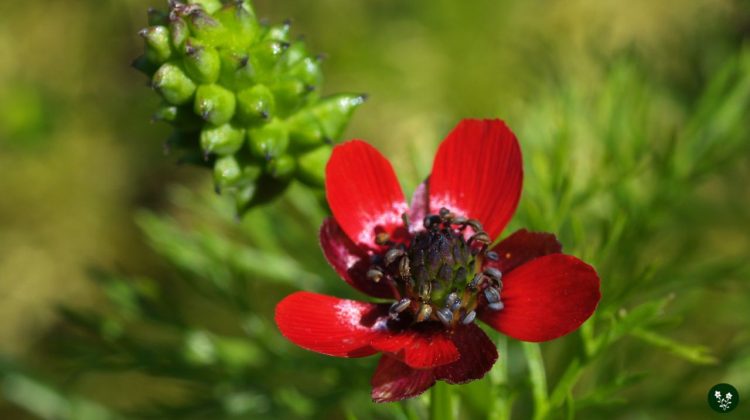
Have you ever stumbled upon a vibrant red flower that not only takes your breath away but also holds a secret tale of love, loss, and transformation?
Enter the captivating world of the Adonis flower, a stunning gem from the buttercup family that boasts a rich history as dramatic as its vivid color.
Often referred to as “Pheasant’s Eye” for its uncanny resemblance to the eyes of a pheasant, this striking bloom is not just a pretty face.
The Adonis flower, or Adonis aestivalis, carries deep symbolism and an enchanting backstory rooted in Greek mythology.
Imagine a tragic love triangle involving Adonis, a mortal lover caught between the affections of goddesses Aphrodite and Persephone.
As fate would have it, the handsome Adonis meets a tragic end during a hunting trip, slain by a wild boar. Inconsolable, Aphrodite’s tears blend with Adonis’ blood, giving birth to the mesmerizing anemone flower.
Now that you’ve discovered the captivating tale behind the Adonis flower, you can’t help but see these fiery red blooms in a new light.
Whether you encounter them in nature or weave them into your floral arrangements, these blossoms will forever remind you of the powerful stories and symbolism entwined with their beauty.
In this article, we'll cover
1. Adonis Flower Origins and Characteristics
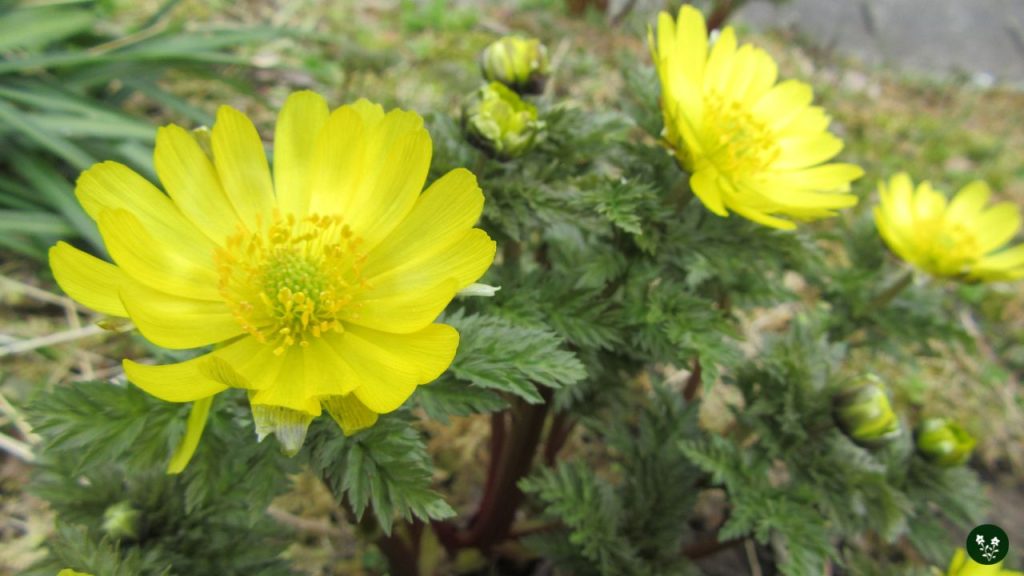
Botanical Classification
Adonis flowers, belonging to the Ranunculaceae (buttercup) family, come in various species.
Among them, the Adonis aestivalis, also known as the summer pheasant’s eye, is notable for its bold red color.
The Adonis vernalis, or spring pheasant’s eye, is another popular species in this genus.
These plants have a strong connection to Greek mythology, with the red Adonis flowers believed to have sprouted from the blood of Adonis, Aphrodite’s lover.
Physical Features
Adonis flowers typically display a striking red hue but can also be found in yellow and white varieties.
They range in size from 2 to 7 cm and are known for their delicate, feathery leaves. The bold red color of the pheasant’s eye flower resembles the eyes of a pheasant, giving it its nickname.
Growing Conditions and Care
To cultivate Adonis flowers in your garden, it’s crucial to understand their preferred growing conditions.
These plants thrive best in well-drained soil and enjoy full sun to partial shade. Ensure that your soil is fertile, and consider adding organic matter when planting to provide vital nutrients.
Keep an eye on the moisture level in the soil, as Adonis flowers require consistent watering. However, don’t overwater, as this can lead to root rot.
Additionally, be mindful of potential pests, such as aphids, which may harm your plants.
Regularly checking for signs of infestations and taking appropriate measures can help keep your Adonis flowers healthy and vibrant.
2. Adonis in Cultural References
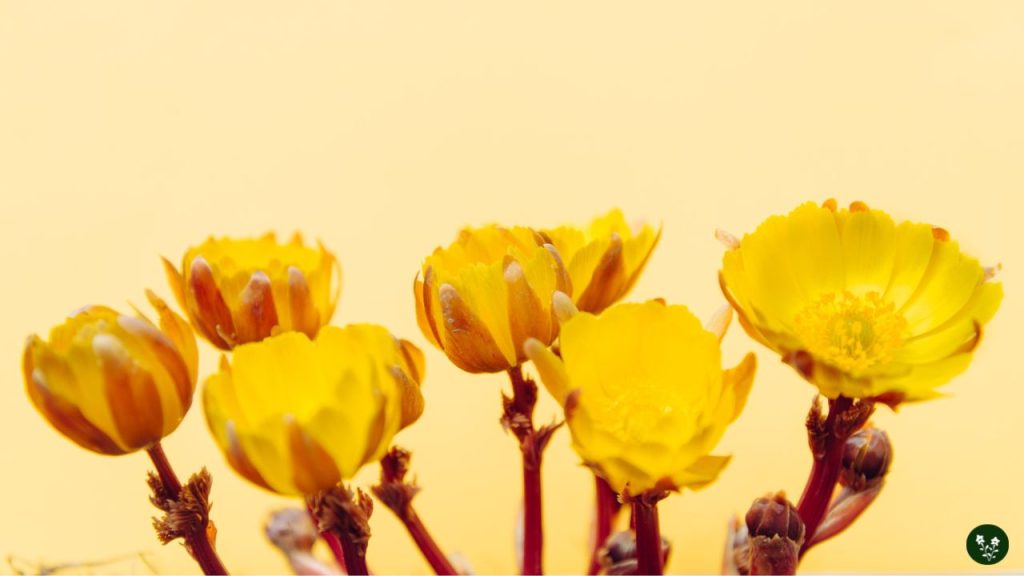
In Greek mythology, Adonis is a figure renowned for his exceptional beauty. He captures the heart of Aphrodite, the goddess of love, making him her mortal lover.
A tragic event occurs when Adonis goes on a hunting trip and suffers a fatal injury from a wild boar.
The myth tells us that his blood mingles with her tears as he dies in Aphrodite’s arms, forming the anemone flower. This extraordinary transformation explains the flower’s symbolism of death and rebirth.
In addition to the anemone, the Adonis aestivalis, belonging to the Ranunculaceae (buttercup) family, also carries the mythology’s rich symbolism.
This annual flower bears the nickname “Pheasant’s Eye” due to its striking red color, reminiscent of a pheasant’s eye.
As per Latin references, “Aestivalis” means “of the summer,” giving a hint of the flower’s seasonality.
It’s interesting to note that certain species of the Adonis flower are on the brink of extinction.
This adds a layer of poignancy to the flower’s representation of the fleeting nature of beauty and love in Greek mythology.
By incorporating the Adonis flower in your home or garden, you’re adding visual beauty and connecting to the rich symbolism and mythology behind the flower.
Cherish this vibrant and storied bloom as a symbol of love, beauty, and the cyclical nature of life and death.
3. Adonis Flower Symbolism and Meanings
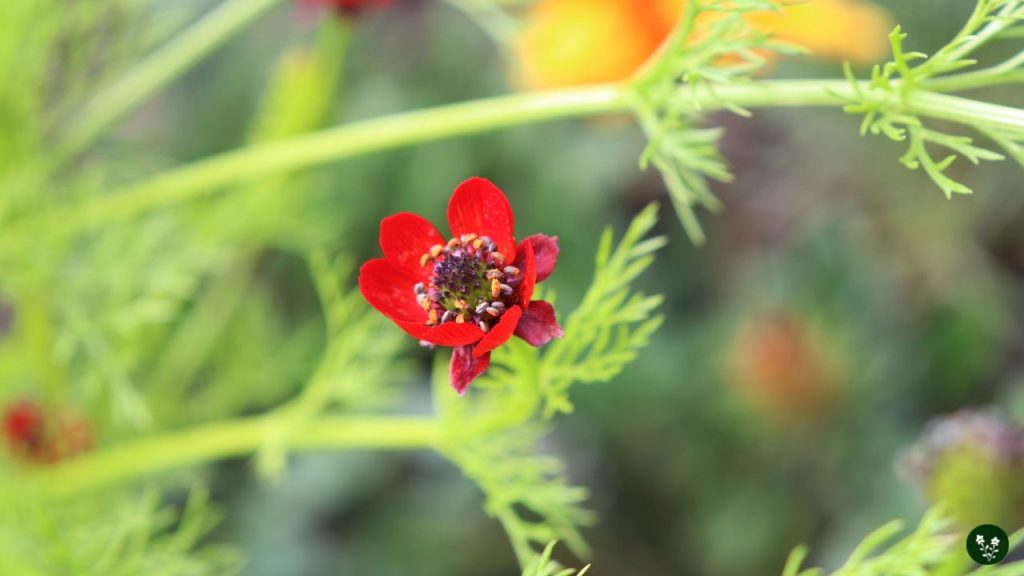
The Adonis flower holds a range of symbolic meanings deeply rooted in ancient mythology. We’ll explore the key themes associated with this beautiful blossom, so you can better appreciate its rich symbolism.
Love and Passion
Adonis flowers are often linked to love and passion, stemming from the Greek myth of Adonis and Aphrodite.
This connection with love adds a sentimental layer to the flower’s symbolism, making it a fitting tribute to someone who passed away quickly and without warning.
Whenever you see an Adonis flower, remember it represents love and passion, and it symbolizes deep affection for those who left an imprint in your heart.
Beauty and Attraction
Throughout history, the Adonis flower has been associated with beauty and attraction.
The youthful Adonis was considered the epitome of male beauty, and this association continues to this day, with the term ‘Adonis’ being used to describe a remarkably attractive young man.
Admiring the beauty of the flower may remind you of how fleeting and delicate beauty can be, prompting you to cherish and appreciate the good things in your life.
Regeneration and Transformation
The Adonis flower also symbolizes regeneration and transformation.
According to the myth, the flower sprouted from the blood of Adonis after a wild boar killed him. This moment in the story signifies the power of nature to create new life from death, a potent symbol of rebirth and renewal.
As you come across Adonis flowers in nature, remember their connection to regeneration and transformation, reminding you that change and growth are essential parts of life.
In summary, the Adonis flower carries a depth of meaning in its symbolism related to love, beauty, and transformation.
Next time you encounter this beautiful bloom, take a moment to reflect on its rich associations and how they resonate with your own experiences and emotions.
4. Adonis Flower Meaning By Color
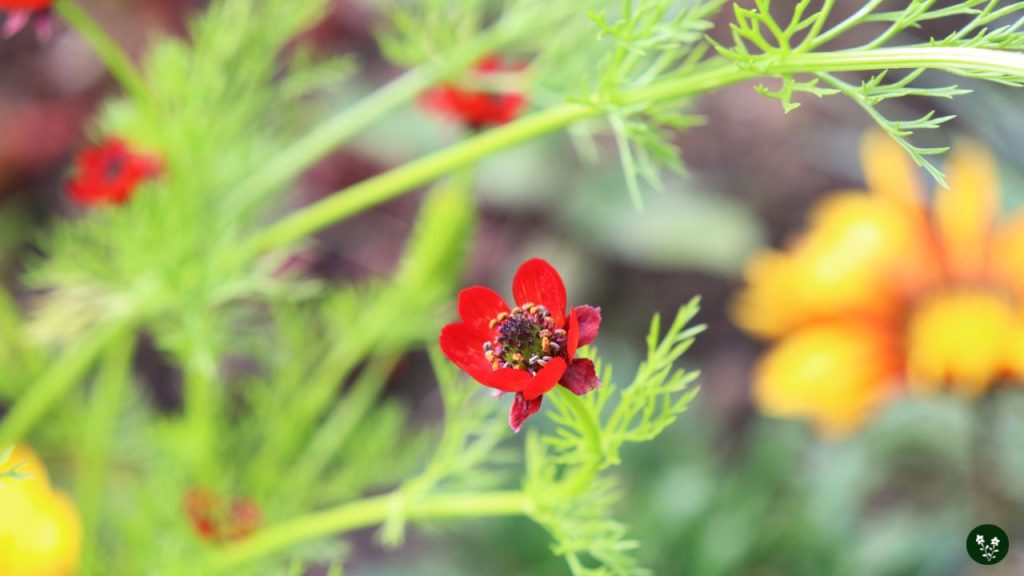
Understanding the meaning behind the color of an Adonis flower helps you appreciate its beauty and symbolism.
Red Adonis Flower
Legend has it that the red Adonis flower sprouted from the blood of Adonis, Aphrodite’s lover in Greek mythology.
This blood-red hue is visually striking and carries a sense of love, passion, and sacrifice.
The red Adonis flower is commonly called Pheasant’s Eye, named after its bold color, which resembles the eyes of a pheasant.
When you see a red Adonis flower, let it remind you of its ties to love and passion.
Yellow Adonis Flower
While not as common as the red variety, yellow Adonis flowers still hold a special symbolism. The sunny hue represents joyful energy, positivity, and happiness.
If you come across a yellow Adonis flower in your garden or the wild, it can serve as a cheerful reminder to embrace the warmth and brightness of life.
5. Interesting Facts About Adonis Flower

Here are some intriguing facts about the Adonis flower that you may find fascinating:
- In Greek mythology, the Adonis flower is believed to have sprouted from the blood of Adonis, Aphrodite’s lover. This is why it predominantly has a blood-red color.
- There are about 20-30 species of Adonis that belong to the crowfoot family, Ranunculaceae. These flowers can also be yellow or orange, with 5-30 petals.
- Adonis flower is often associated with death and bad occasions. Some might say it symbolizes determination and expresses a feeling of “I can’t forget you.”
- Besides being an eye-catching plant, Adonis flower is also known for its toxicity, which can threaten livestock and pets if ingested.
- In Korean, the Adonis flower is known as “화살풀” (hwasal pul), which translates to “arrowroot.”
- Adonis flower is native to regions such as Europe and Asia. One species, Adonis amurensis, is native to the hills of the Japanese islands and China along the Amur River.
- Adonis plants rely on insects for pollination, making them an essential part of their ecosystem.
Now that you’re familiar with these facts about Adonis flower, you can appreciate its rich history and symbolism when you encounter it or choose to include it in your garden.
6. Gifting Adonis Flowers
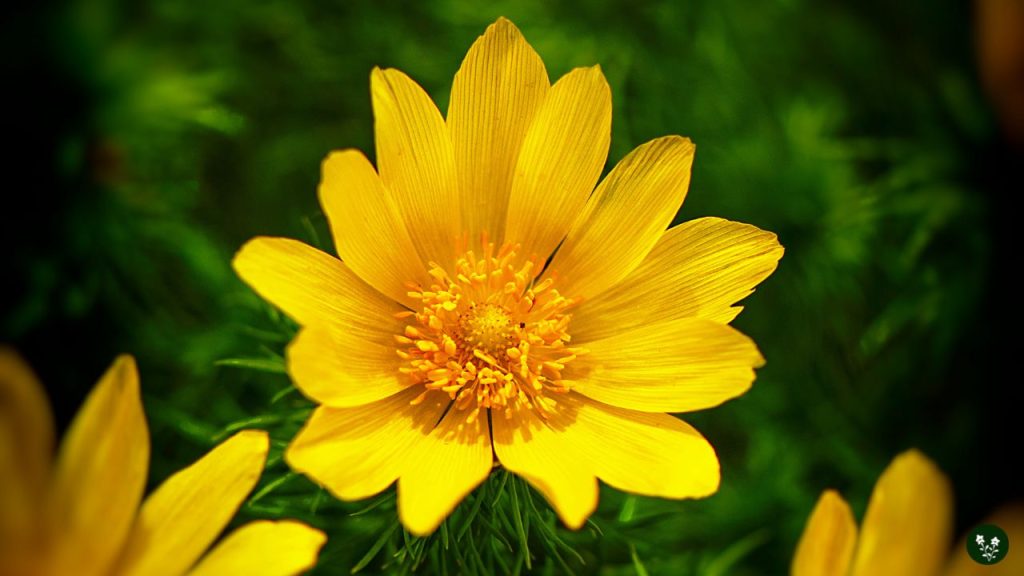
When considering gifting Adonis flowers, it’s important to understand the meaning and symbolism behind these stunning blooms.
Derived from Greek mythology, the Adonis flower is said to have sprouted from the blood of Adonis, Aphrodite’s lover, giving the red flower its name and significance.
These flowers symbolize love and passion, making them ideal for romantic gestures such as anniversaries, Valentine’s Day, or simply as a token of affection.
With their bold red color, the Adonis flowers, also known as Pheasant’s Eye, can make a striking impression and leave a lasting memory for your loved one.
Since many species of Adonis flowers are on the verge of extinction, it’s crucial to source your blooms responsibly.
When shopping for Adonis flowers, always look for sustainable and ethically sourced options.
For a more personal touch, consider planting Adonis flowers in your garden to create a symbolic and intimate connection to the ancient love story of Aphrodite and Adonis.
Not only will you contribute to the conservation of these flowers, but you’ll also establish a special connection with your loved ones whenever you admire the bright colors of these plants.
Incorporating Adonis flowers into your gifts or arrangements is a beautiful way to convey your love and appreciation, creating an unforgettable experience for you and your significant other.
Discover the hidden meanings behind your favorite flowers:
Leave a Reply